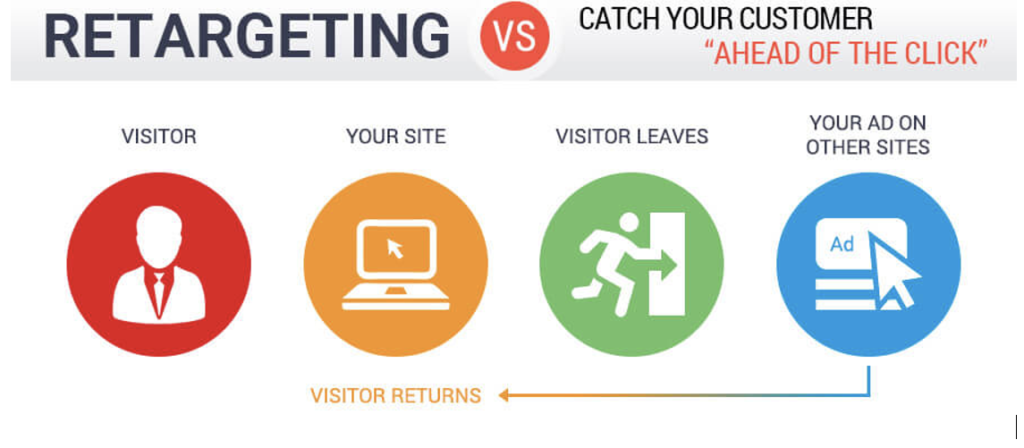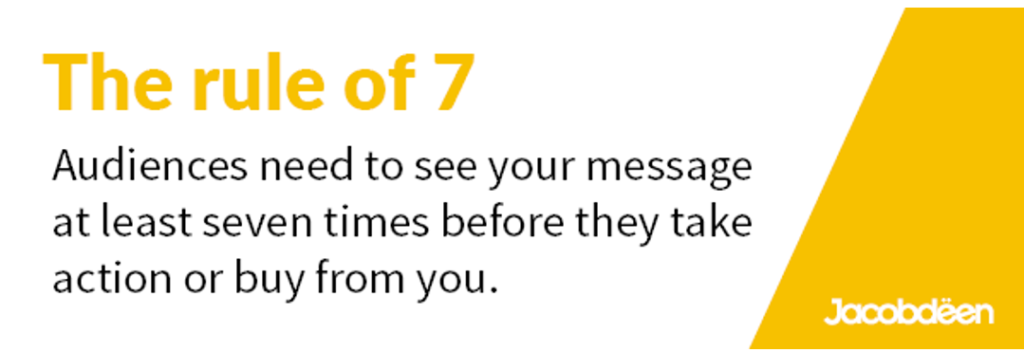It goes without saying that your marketing funnel, which is the process that guides a prospect, taking them from stranger to customer, is one of the most important, and affective assets in your marketing arsenal.
So, if you want to take your marketing conversions to a new and exciting level, your funnels will need to include some form of retargeting which in practical terms involves:
The monitoring of your customers’ behavior and using that info to push them back to your website.
By far, retargeting is a sure way to supercharge your marketing ROI.


What Is Retargeting?
Have you ever visited a website and then later started seeing banners for that website following you around all over the web? That’s retargeting, aka remarketing (people use those words interchangeably).
Retargeting happens when you visit a website like Amazon for example.
They place a cookie on your computer, and no matter where you go on the internet, they will identify you.
Meaning that they can show you ads related to the web pages you visited when you clicked on Amazon’s website.
The Obvious Benefits of Using Retargeting for Marketing
Chances are, your marketing funnel is built to drive brand awareness and increase conversions.
You’ll be happy to know retargeting can assist both, for the simple reason you have the space to create direct, unique, personalized ads.
Take a look at these retargeting statistics below.
- 3 out of 4 customers notice retargeted ads
- Retargeted ads on Facebook are 76% more likely to get clicks than regular display ads
- If you leverage retargeting along with other channels, you can sell 50% more
Let’s say you have a marketing site and a visitor clicks on a link to your SEO services page.
They’re going to be placed on your SEO retargeting list, meaning they’ll receive emails containing SEO-related content since that’s what they’ve demonstrated an interest in:

Although a standard sales funnel can be effective, most are impassive.
Not so long ago, marketers had no option but to create their own marketing strategies based on audience analytics and market research.
But thanks to the power of retargeting, you can now continue communicating with customers and prospects without needing to email or call them on the phone.
Target a Specific Audience and Deliver Tailored Value
Retargeting also opens your marketing up to a number of other campaigns.
It’s not as simple as “Well, if they hit a product page, I’m just going to follow them around with that banner.”
But rather it works like this.
If a website visitor reads one of your blog posts and the topic was about creating a marketing funnel, you can follow them around on the internet and perhaps offer a free marketing funnel eBook in the form of a display ad.
Then, once they opt in through the eBook, they’re placed onto another pixel on Facebook.
Facebook knows these people have opted in for your eBook (probably a warm lead), so the next step might be to catch them with a webinar or compel them to buy a product.
What happens then? The lead in question filters through the funnel.
Push Leads through the Funnel Faster
The idea behind any marketing funnel is to move people down through the various stages.
If you know they usually purchase after five touches with your brand, try to see if you can cut that down to two or three with the addition of retargeting.
Research has shown that 92% of customers don’t purchase on their first visit to a website, which is exactly why you need to follow them around and make sure they enter back into the funnel at the right stage.
In order to do that, you’ll need to retarget them with fresh content.
If someone comes to your homepage and they don’t convert when you do a remarketing campaign, do you think you should send them back to your homepage?
No! They obviously didn’t resonate with the content there, so try to nudge them back onto your website with something new.
Remember: Retargeting Is About Developing Relationships
Just like dating, the key to remarketing is building relationships and trust.
Someone comes to your website, they don’t buy, you remarket to them, and they keep seeing your ads everywhere.
Soon, they begin to feel and think like they know you, and are now more likely to give you a chance, which they will not give to a total stranger.
By the way, the “rule of seven” works well with remarketing, too:

The process remarketing follows is this:
- Earn your site visitors and potential customers’ trust by making them comfortable with you.
- Gently push to get them back to your site by educating them further through blog posts, webinars, training materials and email follow-up sequences.
- Ask them to make a purchase. Your audience is much more likely to convert if they’ve already invested in trusting you.
As with all aspects of digital marketing, retargeting requires a consistent application. It may take a few months to see any ROI, and you may even have to test and tweak your messaging.
Remember, the more you know your audience, the better you can retarget them as they work through your marketing funnel.
The next thing you know, you’ll have customers saying, “It’s almost as if they read my mind and know exactly what I want.”



